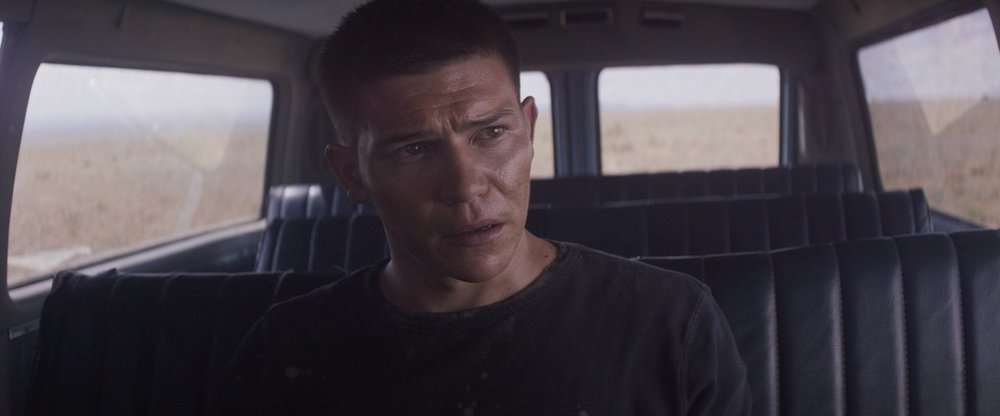-
Posts
525 -
Joined
-
Last visited
Everything posted by AJ Young
-
Of course! Good luck with your film and stay safe!
-
Ha! The dynamic with you and your girlfriend sounds hilarious. I coded the site from scratch. If you're curious, I left as much detailed notes as possible in the source code of the website. It's a little easter egg!
-
It's great! I related a lot to the first episode.
-
I completely agree. UE4/5 democratizes a lot of assets filmmakers can use and Blender is incredibly accessible. In a few short years, this technology will be even easier to use and implement on a small indie scale. Hell, everyone is getting a large 4K TV now! ?
-
Try https://cameraambassador.com/ I believe they ship, but they are also in Chicago!
-
Oh! Is my name displaying as Ayjay? What browser are you using?
-
I'll try to implement that! Thank you! I checked out your website! You've done a lot of projects. You're right, definitely a different style, but it works for you! ? Backend development is a pain, so I totally understand. haha
-
Thank you for your advice!
-
Under taking animation solo is incredibly challenging, so I wouldn't expect anyone to produce an animated feature of Pixar/WAB scale by themselves anytime soon. I will say, Unreal Engine does get you there faster. Buying 3D assets/textures/etc can be costly, but Unreal does come with a lot of free assets that are photorealistic (Quixel). However, the only downside to using UE4/5 are hardware requirements; to fully utilize the lighting engine requires powerful GPU's and even then the lighting isn't 100% true to life like ray tracing is (ie, lack of dynamic bounce)*. It looks like UE5 does a lot more, but again it's running on the PS5 which is incredibly powerful. Blender, on the other hand, is more accessible to slower hardware; it just means longer render times. However, you lose the real time rendering that UE has and UE's free assets. Needless to say, UE5 looks incredible and definitely bridges the gap between real time rendering and traditional animation. I would suspect new studios to open up that offer a volume like the one The Mandalorian used, but at an affordable rate with a library of assets to build with or the ability to use your own UE5 project. It's just like any other studio that can provide pre-made sets in real life, but now it's virtual. *Some of the highest end graphics cards from Nvidia can do ray tracing in real time, but: $$$
-
A western short film I shot has been released. Shot in October 2019 over 3 days (all over night). I used the Alexa Mini with Atlas Anamorphics (32, 65, 100). For the look of the film, we wanted to emulate the highlight response of kodak film, so we underexposed the entire project by two stops and brought it back up in the color grade. This gave us a lot of highlight detail and fogged the shadows at the same time. I've done this before on the feature film, The Watchman's Canoe. Under-exposing the logc image essentially redistributes the dynamic range of the image. Bringing it back up in the color grade will introduce noise, but de-noising or grain hides all of that. We I get, in the color grade, is a lot of highlight detail that I think shrank down. In the film, look at the curtains of the interior shots. They were really bright when we looked at them on set with the proxy LUT, but I was able to finesse them in the color grade. What do you think?
- 19 replies
-
- 2
-

-

-
- western
- short film
-
(and 1 more)
Tagged with:
-
Thank you! The blinking eye movie was a fun one to shoot.
-
https://www.unrealengine.com/en-US/blog/a-first-look-at-unreal-engine-5 Epic Games revealed today a first look at their new real time rendering engine, Unreal Engine 5. Their first look shows a real-time demo of "Lumen in the Land of Nanite" running on a Playstation 5: Unreal Engine is quickly becoming the go to real time software for pre-vis and actual use on set. Matt Workman has been at the forefront with Unreal Engine at an indie scale. This new engine incorporates a lot more rendered animation quality that more accurately represents real world lighting. Shows like The Mandalorian utilize real time rendering, but this technology is actually accessible to even low budget projects: https://www.youtube.com/watch?v=ciZauvY8UHY --- Personally, I've been diving into virtual production because of the potential possibilities of its use for indie narrative productions. Unreal Engine 4 is fantastic, but doesn't quite have the real world accurate bounce lighting that ray traced renders have (ie animated films). However, Unreal 5 looks like it provides that and in real time. Needless to say, this is quite exciting. Now, if only I had a GPU that can handle the engine.
-
Thank you for looking at it! Did any of the opening photos eventually start to play? They're place holder thumbnails until the video fully loads which then plays the shot as a loop (essentially a GIF, but it's an .mp4 to save on download time) EDIT: I think I may have fixed it. If you're willing, could you try it again?
-
Just finished updating my website! What do you think? Anything I can do to make it better? http://www.ajyoungdp.com/
-

Lighting daylight interior without 18ks?
AJ Young replied to Varuj Chapan's topic in Lighting for Film & Video
Thank you! I believe we used a 4x4 frame of 216. If I were to light two people like you suggested, I would just back up the mirror board and add a second 4x4 frame of diffusion: each frame covers a character while the mirror board hits both frames because I backed it up. -

Lighting daylight interior without 18ks?
AJ Young replied to Varuj Chapan's topic in Lighting for Film & Video
Mirror boards from the standard grip companies work great, they're simple in design. Matthews, MSE, American, etc. They're heavy and require a solid combo stand. Also, here's the photo (idk why the image won't load): -

Is GH5 really worth it compared to the GH$
AJ Young replied to Max Moosbrugger's topic in General Discussion
My mistake! Thank you for correcting me. ? -

Is GH5 really worth it compared to the GH$
AJ Young replied to Max Moosbrugger's topic in General Discussion
Just want to make a slight correction, the GH5S and GH5 have identical sensor sizes (17.3 x 13 mm), but the GH5S has bigger photosites than the GH5. I wholeheartedly agree, though, the GH5S has better image quality simply because of the larger photosites. -
Honestly, the technical requirements you're hoping to meet are the reason why the LiteGear stuff is expensive; they've done the R&D to build something that meets those technical requirements. Unless you've got a background in electrical engineering, meeting those requirements with cheap DIY solution will be difficult. That YouTube video I shared may not directly apply to your situation, but I believe it's a good starting point to finding a solution that works for you. This guy built his with a dimmer switch that should work for frame rates under 1/1000: Again, you're looking into a lot of R&D on your end. The amount of time you spend on this project can teach you a lot about LiteMats are made, which is super handy!
-
Sounds like you need to get the LiteGear parts then. ?
-
This video may help!
-

Recording Monitor Latency Confusions
AJ Young replied to Max Field's topic in Camera Assistant / DIT & Gear
Do you notice any latency during both recording and monitoring from the Atomos? If so, I'd chock it up to #1. If just during recording, then #2. ? I haven't noticed any latency issues on Atomos, though. I've used them for years and the Ninja V is definitely their best one so far. The Samurai Blade is one of their older models, so I wouldn't be surprised if it has latency issues.- 1 reply
-
- 1
-

-
@Ram Nanda: It's not a matter of right or wrong; everyone is right. What matters is what works for you and your team. Measuring from the image plane works just fine for 99% of camera angles. The most important thing you need to do is check the focus marks of each lens during camera prep, which is standard practice. If your marks match the distances you measure in prep, then measuring from Φ will do you just fine. If measuring from the entrance pupil works for you, then go for it!
- 17 replies
-
- focus
- entrance pupil
-
(and 2 more)
Tagged with:
-
Congratulations on launching the channel! I subscribed. Fun stuff!
-
The biggest misconception about monitoring on set is that there is a "right" one to look at. Even a Flanders will look incorrect if it's not in the proper viewing conditions. What are proper viewing conditions? A pitch black room with a color calibrated D65 monitor. You can get a color calibrated D65 monitor, but the pitch black room on set is a luxury. Calibrating your monitors with SMPTE bars on set will be your best option. In prep, calibrate your monitors with SMPTE bars to see which ones are different. Most monitors like a SmallHD 502/702, Flanders, Sony, TV Logic, etc will math pretty well. Cheap monitors, even calibrated, will still look off. Practically speaking, if you don't have a pitch black tent to set up a color calibrated D65 monitor, then calibrate your monitors with SMPTE bars every time you change locations and determine in camera prep which monitor will be the best one that reflects your look. At the end of the day, everything will look different in post. ?




